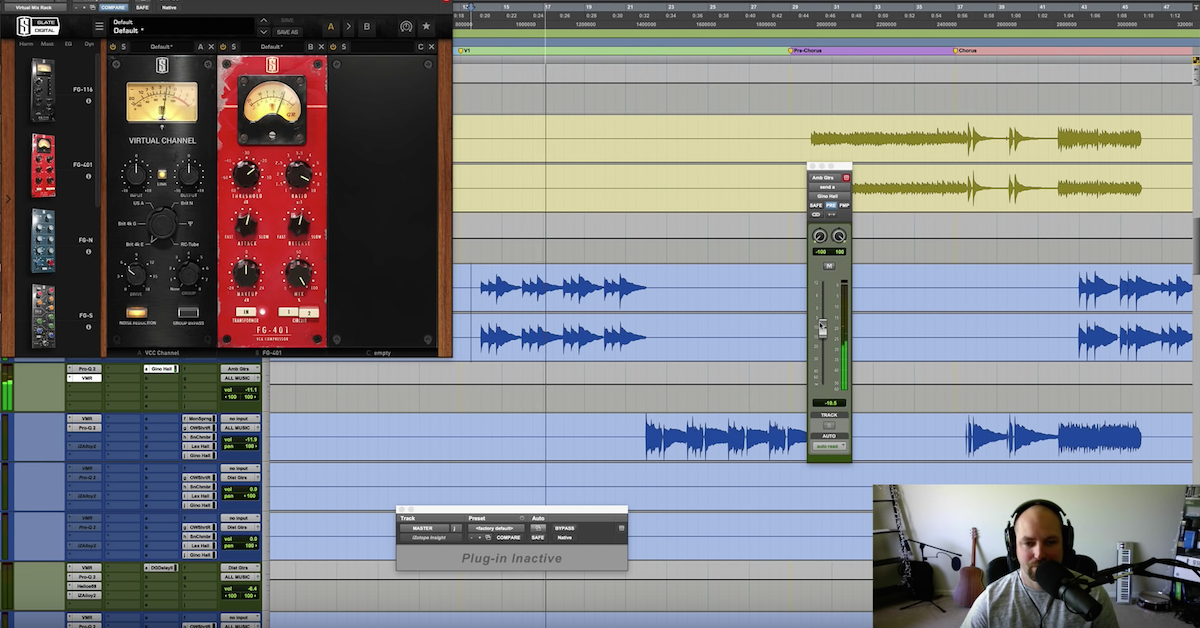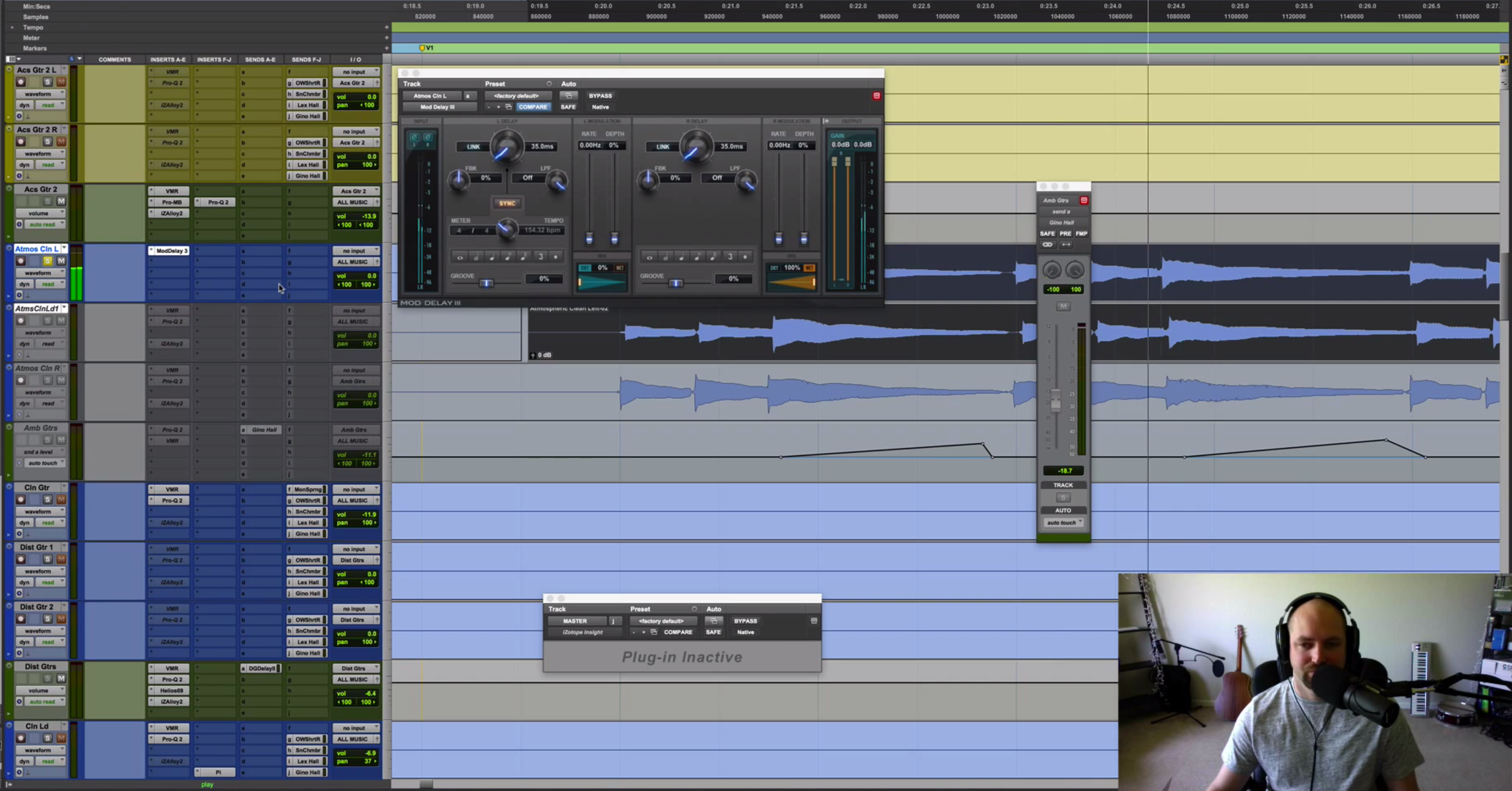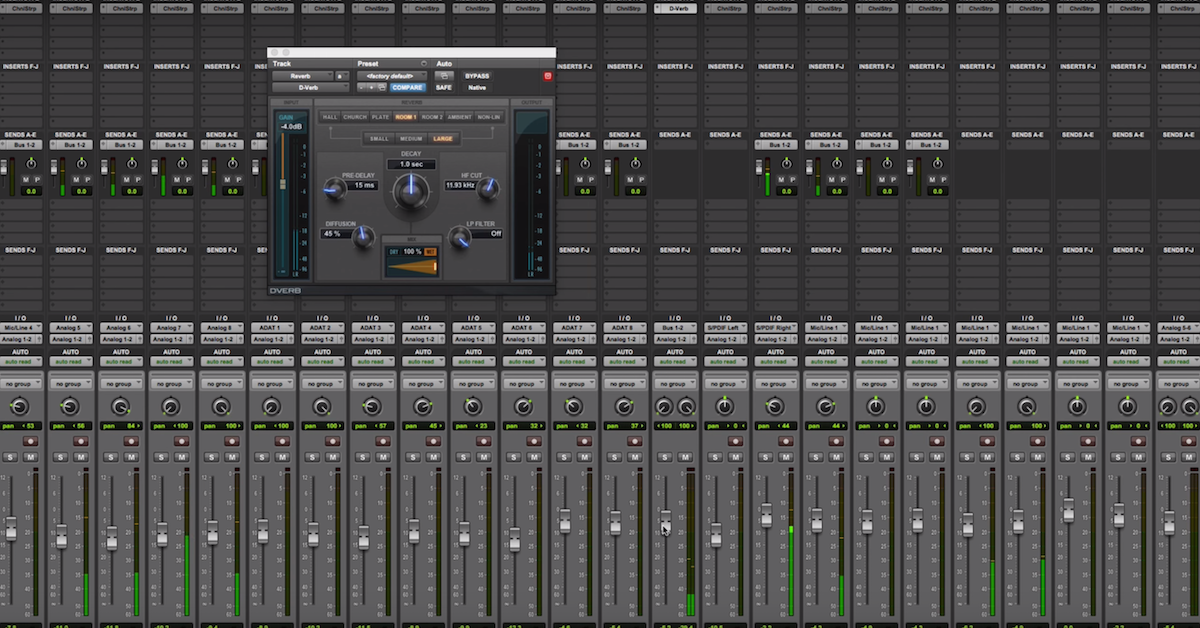Effects Sends: Pre vs Post-Fader
Today, we are going to be taking a look at using sends. Kind of a creative way to do that. We’ve got a Q&A from my friend Ron over at themixacademy.com.
Question #1 is, “When do we use the Pre button on the sends. For instance, when sending the signal to a reverb, should it be pre or post?” If you already know what pre or post is, stick around. I’m not just going to show that in action, I’m going to show a little bit of a tip on how I’m using sends sometimes to get some effects out of things like reverb.
We’ve got some guitars that are just clean, but – let me solo these.
[electric guitar]
Practically untouched at the moment, and I like them left and right. They’re just doubled guitars, but I’ve got a couple of ideas for them that will help address Ron’s question as well.
I’m going to send these to a new track so that they go together, so a new stereo aux, and I’m going to call them, “Am guitars,” for ambient, and I’m going to create a sweet effect here.
We’ve got those going together now, you can see they’re both going to ambient guitars, and in my template, I have to route that to “All Music.” Go ahead and knock that out.
Instead of using processing for both of these, I’m going to bypass that, get rid of it, and I’m going to throw the same processing, but on the aux, and then I can control them together, so maybe take a little bit of the mud out, let’s come over here to Virtual Mix Rack, and I’m going to throw the VCC on it, and a little noise reduction there.
Next up, I’m going to send this – now on my template mix session that members of themixacademy.com get access to, I’ve got a ginormous hall setting. So, I’m going to take and send these ambient guitars to my gino-hall… as my wife texts me in the middle of a video. Sorry, guys.
Gino-hall, so there we go. We’re going to look at the pre-fader here in a second, but for now, what I want to do is I want to bring these up to volume, and now this is the level to control them. Let’s take a listen to those guitars again.
[guitar]
Then if I send into this gino-hall.
[guitars with reverb]
It’s got a sweet sound to it, and the cool thing about that gino-hall, I’ll pull it down here… Give a shout out, I believe I actually learned that gino-hall trick from Kim Louis, so props to him for helping people learn how to make better music. We’ve got gino-hall, Lexicon 224, and the cool thing about this is it’s got a modulation setting, so there’s a pitch shift as the tone decays. It does kind of a chorusing thing, so it sounds really, really sweet.
One of my favorite guitar pedals – some of you guys know, I used to lead worship a lot and play a lot at church – was the Boss RV-5, and it has a modulated reverb setting, and pick that up from the guitar player from Chris Tomlin. He used to do some blogging, and I think that may have single-handedly established some of the ambient sounds in Christian and CC and music.
What I’ve got here I the opportunity now to experiment with whether or not I want those clean guitars in the mix, or I just want to send it to the reverb and let it be ambience from this particular instrument.
Let’s experiment now. So, in the mix, I may – let’s pull that open and let’s hear those clean guitars.
[music]
Sounds like a piano is doing something similar, so what I’m thinking for this, just kind of experimenting, is I’m going to drop the volume all the way down to zero and pull the send up. So let’s take a listen if we solo what happens.
We get nothing, right? That’s because the pre and post-fader simply means that, if we’re sending into an effect, and we have nothing here on our actual track, then we’re not sending anything to the effects. This is post-fader.
When we click pre-fader, now, even if this is set to zero, we can send signal from this guitar.
[reverb]
What that allows us to do is send the signal from these guitars, or vocals, or drums, whatever, to these effects without the dry signal in at all. You can kind of create a cool effect with that.
Let’s take a listen in the mix to what it sounds like without the dry signal, but just with the ambience.
[song]
We can always bring in the dry signal, but now that dry signal is not going to be affecting how much we send to that reverb. That is completely controlled by this.
You can affect the dry signal in context of the mix, independent of the effects.
I hope that explains pre and post-fader a little bit for your Ron, and then for you guys experimenting, I do this a lot with pads, where I have the pad volume completely down, and just send the pad to an effect like a reverb or a super long decaying delay, or something fun like that.






